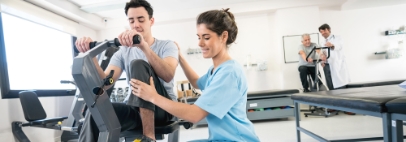- Monday to Friday from 8.00 - 12.00 and 13.00 - 17.00
When the muscles weaken
Back pain is often accompanied by the following additional symptoms:
- Leg pain
- stiff back
- Tingling or feeling of falling asleep in the legs
- disturbed sleep (no comfortable position possible)
Lower back pain often leads to restrictions in the body's mobility. Pain-free movements are often no longer possible, especially in the case of lumbago. The symptoms manifest themselves in everyday life, e.g. during the following activities:
- Driving a car
- Cycling
- Vacuum cleaning
- Lifting or holding loads
- Reaching to take things from high shelves or cupboards
- etc.

.jpg)
.jpg)

